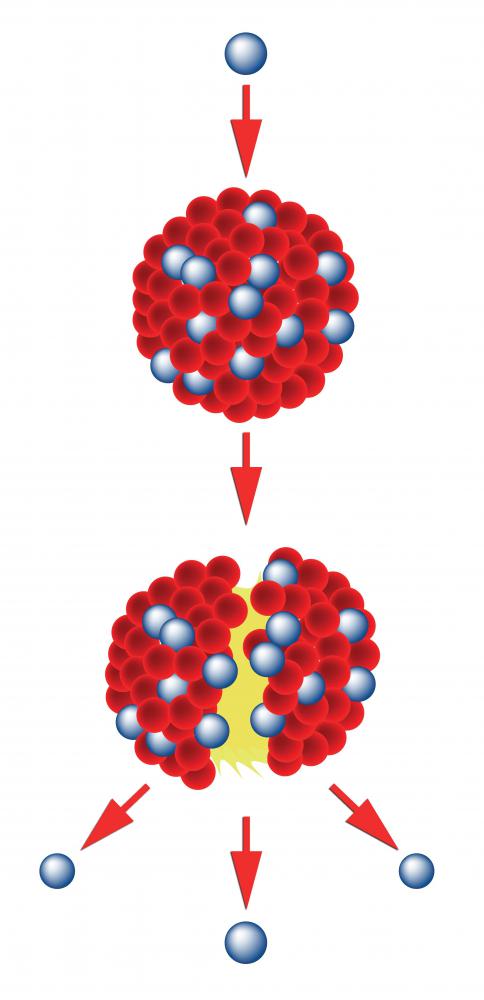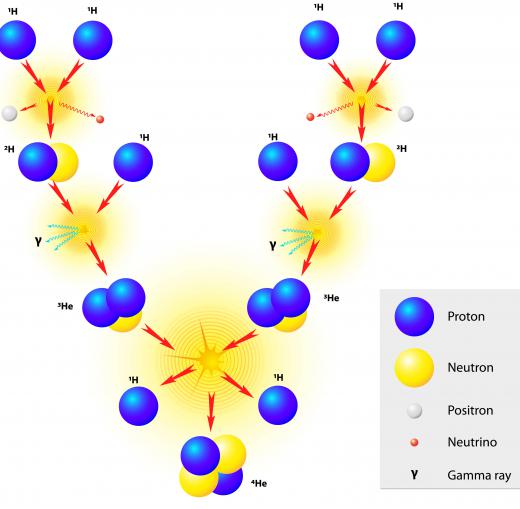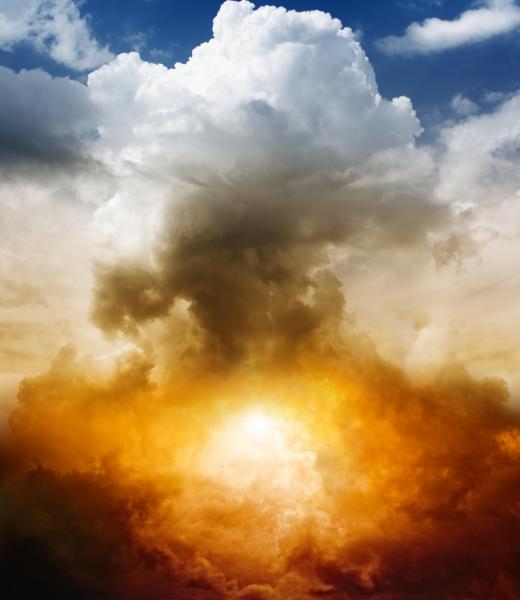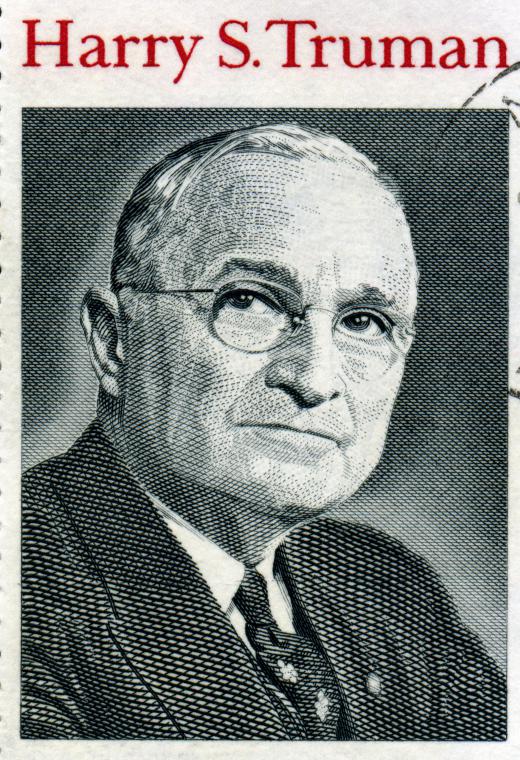What Is a Hydrogen Bomb?
 Michael Anissimov
Michael Anissimov
A hydrogen bomb is, by far, the most destructive weapon that mankind has ever invented. It is the most powerful type of nuclear bomb, in some cases reaching more than 2,000 times the yield of the nuclear bombs dropped on Hiroshima and Nagasaki, Japan. Unlike the first “atom bombs” — also known as A-bombs — which release energy by fission, or breaking apart, of heavy atomic nuclei like uranium and plutonium, a hydrogen bomb releases energy by fusing together light nuclei like tritium or deuterium, converting even more matter into energy. When President Truman authorized the dropping of the A-bomb on Hiroshima and Nagasaki, he said that the weapons used the same power as the Sun, but that was not actually true — the Sun uses nuclear fusion, not nuclear fission. A hydrogen bomb, however, really does release the power that fuels the Sun.
How it Works

Nuclear fusion involves creating heavier elements out of lighter ones by joining atomic nuclei together. In the Sun, this mostly takes the form of fusing hydrogen nuclei to form helium. A fusion reaction is very difficult to start because nuclei are positively charged, and therefore strongly repel one another through the powerful electromagnetic force. The nuclei of elements heavier than hydrogen are held together by the strong nuclear force, which, at this scale, is much stronger than the electromagnetic. The strong force, however, is only significant over extremely short distances, of around the size of an atomic nucleus.

To start nuclear fusion, nuclei must somehow be brought very close together. In the Sun, this is achieved by gravity. In a hydrogen bomb, it is achieved by a combination of extreme pressure and temperature brought about by a fission explosion. A hydrogen bomb is therefore a two-stage weapon: an initial fission explosion causes a fusion explosion. A fission bomb "primary" is detonated in the normal way, which then compresses a fusion fuel "secondary" and ignites a uranium "spark plug" which fissions and subjects the fusion fuel to the heat necessary to begin the reaction — about 20,000,000°F (11,000,000°C).

In the Sun, the main fusion process results in four hydrogen nuclei, which consist simply of a single proton, combining to make a helium nucleus, which has two protons and two neutrons. The heavier hydrogen isotopes deuterium and tritium, with one and two neutrons, respectively, are created at intermediate steps. It is impractical to try to replicate the whole process by starting with ordinary hydrogen, but the fusion of deuterium and tritium can be achieved. An early test involved using these gases in liquefied form, but a crucial modification was the use of the solid lithium deuteride, a compound of lithium and deuterium. Under the conditions created by the initial fission explosion, the lithium is transformed into tritium, which then fuses with the deuterium.
History

The first time the principle of a hydrogen bomb was tested was on 9 May 1951 by the United States military, during the “George” test of Operation Greenhouse at the Pacific Proving Grounds. Most of the energy yield of this test came from fission fuel, but it demonstrated that a fission bomb could be used as a stepping-stone to something even more destructive. A similar test, “Item”, took place on 25 May 1951.

The first true hydrogen bomb test, “Ivy Mike”, was on 1 November 1952, detonated at Eniwetok Atoll in the Pacific, as part of Operation Ivy. The bomb exploded with a force equivalent to 10.4 megatons (million tonnes) of TNT — over 450 times more powerful than the atomic bomb dropped on Nagasaki during World War II. Using liquid deuterium as fuel, this hydrogen bomb required 18 tonnes of refrigeration equipment. It was not a practical weapon, but it proved that a fusion bomb of enormous power could be built.
A later test, “Castle Bravo”, used solid lithium deuteride instead, decreasing the weight of the device, removing the need for refrigeration, and making it a weapon that could be carried by a plane or attached to a missile. The Castle Bravo test, with a yield of 15 megatons, is the most powerful nuclear weapon tested by the United States, but not the most powerful ever. That distinction belongs to the device known as “big Ivan” detonated by the Soviet Union 13,000 ft (4,000 m) above a test field on Novaya Zemlya island on October 30 1961. The 50 megaton explosion resulted in an area of complete destruction with a radius of 15.5 miles (25 km) from ground zero, and broken window panes 559 miles (900 km) away. Witnesses described a huge fireball that reached the ground, and up to a height of almost 34,000 ft (10,363 m); a mushroom cloud that reached 210,000 ft (64,008 m); and a flash that was visible 621 miles (1,000 km) away.
AS FEATURED ON:
AS FEATURED ON:















Discussion Comments
I liked the historical concurrencies.
Really by *far* most of the energy in a "hydrogen bomb" is derived from fission. Fusion only contributes a small amount.
Think of a hydrogen bomb as a boosted fission bomb, since most of the energy in a Deuterium-Tritium fusion is delivered in the form of a fast neutron. It is this large flux of fast neutrons from fusion that greatly enhances (boosts) the fission reaction, even in material (Uranium 238) that can't sustain a fission chain reaction by itself.
There is a theory by Bruce Cathie that you can only detonate the bomb within a certain window of time, in a certain place and this corresponds to (possibly) Ley lines or something else. In other words, there cannot abe detonation of all nukes in a nuclear holocaust of sorts. Comforting if true, not so much.
The liberation of the energy in a hydrogen bomb, is truly is "what powers the Sun", and can be considered a dark point in time when man is able to liberate the physically expressive energies of Lucifer at will.
I hope we will be able to use much of that energy in a positive way, instead of for the destruction of our world.
This bomb is crazy destructive.
In "A Brief History Of Time," Steven Hawking mentions that if all of the world's water were to be made into one huge hydrogen bomb, there would be enough pressure to create a point of singularity -- a tear in space time (a black hole). Quite destructive, eh?
There will be world wars 3,4,5 and so on, since the creation of lives could not be destroyed by any means or at any time.
Some of the most horrible creations of war can lead to the best uses in peace. I am 100 percent against the creations of weapons to kill all, but thanks to these weapons, we have began to understand a technology that can fuel our societies and give us the means to push out into the stars and beyond.
So while I agree that nuclear technology is bad when used for weapons, just keep in mind if not for man needing to build these weapons, it might have never pushed us to find the secrets of this science which could potentially improve our way of living and understanding the universe.
Mankind has not created things we have no use for. Welcome to the future of destruction, Armageddon! Let's not worry too much because there won't be anything to worry about. tesheme B., Toronto.
As long as there is religion there will be wars because political religion is the fifth worst religion of all. if mankind vanished from the planet, it would be a happier place. we were never to be here in the first place, so I say happy bombing. it will reshape the world.
It is maybe true to think that making the atom bombs brings a kind of peace. If everybody is scared of each other, they will never try to make foolish wars. Only fear keeps the human in peace.
Why is it many people brush aside the notion of cold fusion? Is it another form of nuclear fusion?
what if the world comes to an end before world war III?
"I don't know how World War III will be fought, but I know how World War IV will be. With sticks and stones." -A. Einstein.
My thought is the same as the gun principle: "Never point it at something you're not ready to destroy."
There will never be a Third world war, all war today is fourth generation and that means that we don't fight countries. we fight small militia groups in a certain part of the world. if it was up to me, we should drop these on each other before 2012, because living in fallout would be much cooler.
Er, I'd say if World War III happened, World War IV can't exist because the Earth won't exist. Simple as that.
Smuggling one of these across the Mexican border would be strange.
Blah. Isn't it pretty naive to assume that every country could disarm all their atomic weapons? The threat of nuclear weapons works by each country calling each other's bluff. Foreign politics is basically a giant high risk game of poker. whoever plays the best hand will win.
it's not the point that they are created they are needed because not every one in the world is happy and nice the real world doesn't work that way. like Al Capone once said, "I have built my organization upon fear."
they shouldn't be created if they are not meant to be used, but they are created because they are meant for a purpose. We need ideas for peace, not weapons of destruction!
more info on how it could be used/where it was used would be great!
A wise man have said that after world war III people can only use wooden sticks for their weapons, and he said that it will come and for sure it will come. It explains what Einstein was worried about.
well, this further increases my hate for the human race. we spend our time making weapons to kill, when we should be making peace.
yea, thanks! i used a lot of this really good info for an essay!
Thanks dude. this was so important to my essay!
it has been used anon29483.
Like Albert Einstein said "I don't know what kind of weapons will be used in the third world war, assuming there will be a third world war. But I can tell you what the fourth world war will be fought with...stone clubs."
*Wow*...it's horrible that such things have been created...imagine if this were ever used.
Post your comments